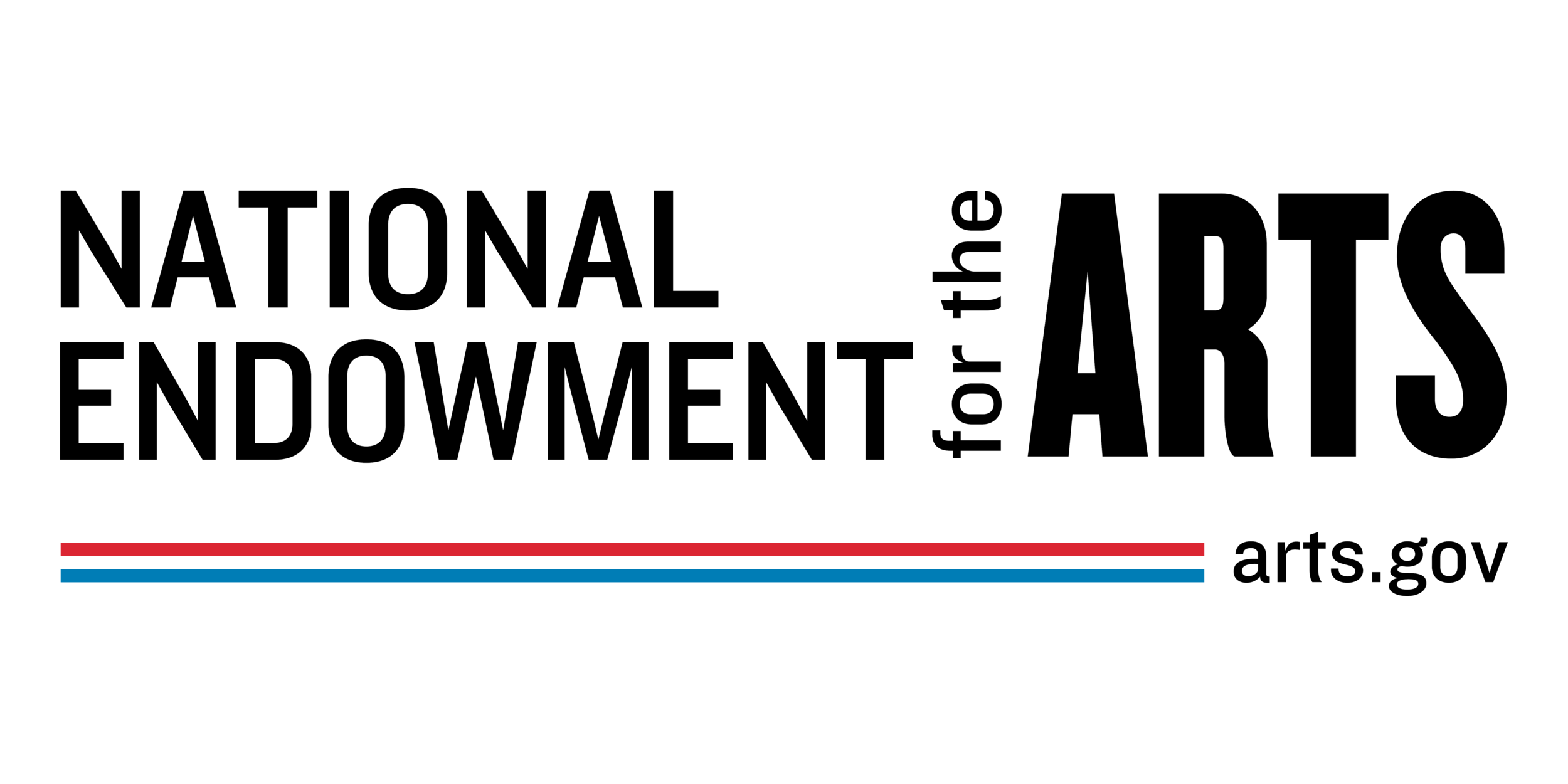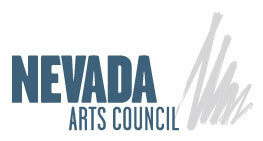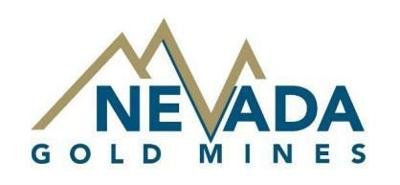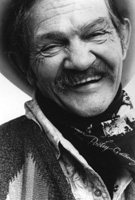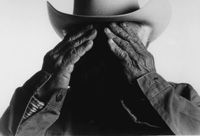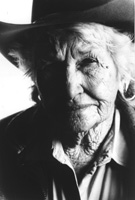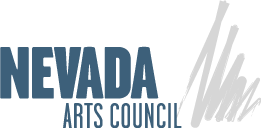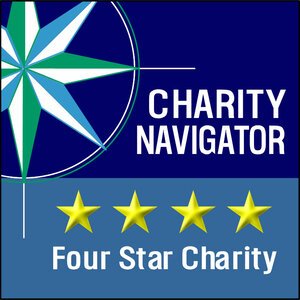Current Exhibitions
Right Where We Belong - Wiegand Gallery
On View Now, INCLUDING
30 Years of Contemporary Cowboy Gear
A retrospective look at the Western Folklife Center’s Contemporary Cowboy Gear Collection (est. 1992) through the words and work of its contributors. Featuring pieces from the Collection paired with some by up-and-coming artists, this exhibit showcases the ever-changing work of western gearmakers and why this work matters.
Established with the help of artist William Matthews, this collection comprises 30 years of high-quality, utilitarian craftsmanship across the western United States and beyond. With more than 100 unique pieces from more than 15 states, the Collection represents a renaissance of functional artistry that it—not coincidentally—played a significant role in igniting. While holding close to tradition, the Collection has inspired change, development, and a flood of creativity.
Highlights of the Collection include the last fancy saddle by Jeremiah Watt; a hitched horsehair quirt constituting the combined work of 10 makers across the West; matching bits and spurs from Ernie Marsh; and a twisted rawhide reata of longtime National Cowboy Poetry Gathering instructor Doug Groves. Over the years, Hal Cannon, Griff Durham, Meg Glaser, Waddie Mitchell, Charlie Seemann, Andy Stevens, Jeremiah Watt, and others have all served as advisers to the Collection, which includes high-quality exemplars of everyday, and not-so-everyday, rawhide braiding, bit and spur making, saddlemaking, leatherwork, horsehair hitching, and much, much more.
In addition to pieces from the Collection, the exhibit includes pieces from Waddie Mitchell’s personal collection as well as work by next generation gearmakers and leatherworkers Dana and Tracy Eklund, Chaz Mitchell, Justine Nelson-Graham, Ashley Radzisauskas, and Bryce Williams.
Every piece tells a story, and every story contributes to the meaning of the West.
The Pioneer Hotel: A Place Where We Belong
This year, we are celebrating the Pioneer Building, its past, present, and perhaps most thrillingly, its future. From its origins as Elko's first bar to the Western Folklife Center today, the Pioneer has had a long, storied, and sometimes notorious history. View collections materials from the Pioneer, hear stories from its residents and visitors, and see what the future holds as we prepare to expand visitors’ cultural experience with a cowboy-poetry-themed boutique hotel. Many cowboys spent the night at the Pioneer over the decades, and soon you can too!
Featured Visual Artists
Teal Blake
Teal Blake’s love for the tradition of ranching and cowboying is unparalleled. Up before dawn gathering the cavvy, camping out on the wagon for weeks on end, and playing cards with the crew during a rainstorm—Teal’s portrayal of ranch life and the people keeping it alive comes from firsthand experience. Living the life he paints about gives him a trained eye and a deep feel for the beauty of the West around him. From his birthplace in Montana to his current abode in Texas, the studio has been Teal’s home since childhood when he was surrounded by horsepeople and artists (his father Buckeye Blake designed posters for the fourth and 10th Gatherings). Teal says he was predestined to become a western artist.
Teal has been painting professionally since 2005. He is a member of the renowned Cowboy Artists of America and has been featured in magazines such as Western Horseman, Western Art & Architecture, Southwest Art, Ranch & Reata, and The Cowboy Way.
In addition to Teal’s featured watercolor and ledger pieces, his original artwork for this year’s 39th Gathering poster, Blue Skies and Good Horses (2023), is on display.
Joseph Haeberle
Joseph Haeberle aims to create inspiring photographic imagery made of dreams, dreams informed by the landscapes that surround him as a regenerative western rancher and dreams that accompany the stories he captures through his lens on his worldwide travels. This set of images is a peek into modern culture in the American West, a region of people still holding traditional values while pioneering into unseen agricultural practices and cultivating a stronger love for the land they sit on. The West is an amalgam of races, cultures, and people, making it resilient, creative, and innovative in nature.
Joe has photographed worldwide ad campaigns and editorial assignments alike, working for clients such as Boot Barn, The New York Times, Pendleton Whiskey, Patagonia, Stetson, Tecovas, Wrangler, and YETI.
James Shoshone
R. James Shoshone, Jr. was raised Washoe and is a member of the Timbisha Shoshone, based in Owyhee, Nevada, on the Duck Valley Indian Reservation. A renowned buckaroo, James embodies vaquero traditions in his life, gear, and art. This set of works showcases James’ skill at pen-and-ink illustration, as well as his versatility with other mediums. Many of his images are recreated from memory, based on bunkhouse stories or scenes he has witnessed in his daily ranch life. In giving these moments new life on paper, James shares his love for the stories conveyed and hopes others will identify with similar stories from their own life. In addition to artwork, James enjoys roping, traveling, and collecting and trading rare high-quality and vintage silver bits and rawhide gear.
James started buckarooing in 1991 and has been drawing since he was a child. He has worked on many of the Great Basin’s large ranches of lore, including the 25, Cross Ranch, IL Ranch, Spanish Ranch, Whitehorse, YP, and ZX.
Something THAT A Cowboy Knows - Lower Level
On View Now
The Western Folklife Center’s ongoing exhibition is Something That a Cowboy Knows, a photographic essay by L.L. Griffin, Denver-area artist and photographer. Through her photographs, L.L. Griffin provides insight into the character and spirit of cowboy poets, singers and storytellers of the American West. Something That a Cowboy Knows first appeared at the Arvada Center and the Colorado Historical Society, and after traveling throughout the West, it was donated to the Folklife Center by Griffin to become part of the Western Folklife Center's permanent collection of exhibitions and artifacts. All photos by L.L. Griffin.







